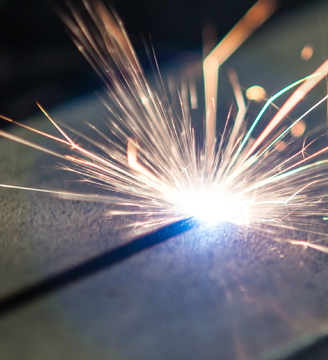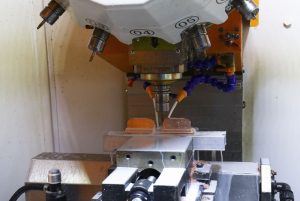With the rapid development of science and technology and industrial economy, the demand for aluminum alloy welded structural parts is increasing, and the research on the weldability of aluminum alloy has been intensified. The wide application of aluminum alloy has promoted the development of aluminum alloy welding technology, and the development of welding technology has expanded the scope of aluminum alloy, so aluminum alloy welding technology has become one of the hot spots of research.
Aluminum alloy encapsulated LED is a new type of lighting fixture with LED as the light source, which has the advantages of energy saving, durability and high brightness. Aluminum alloy is the most widely used non-ferrous metal structural material in industry, which is widely used in aviation, aerospace, automobile, machinery, shipbuilding and chemical industry.
Material performance aluminum alloy has low density but high strength, close to or better than senior steel, good ductility, can be processed into various profiles, has excellent electrical conductivity, thermal conductivity and corrosion resistance. It is widely used in industry, and its use is second only to steel.
Aluminum alloys can be divided into two categories according to processing methods: deformed aluminum alloys and cast aluminum alloys.
Deformed aluminum alloys are subjected to pressure treatment. It can be processed into various shapes and specifications of aluminum alloy materials. It is mainly used for making aircraft, building doors and windows, etc. Deformed aluminum alloys are divided into non-heat-treated aluminum alloys and heat-treated aluminum alloys. Non-heat treated type cannot improve mechanical properties by heat treatment, but can only be strengthened by cold forming, mainly high purity aluminum, high purity industrial aluminum, industrial pure aluminum and rust-proof aluminum. Heat treatment hardened aluminum alloys can improve mechanical properties through heat treatment such as quenching and aging, and are divided into hard aluminum, forged aluminum, super hard aluminum and special aluminum alloys.
Cast aluminum alloys can be divided into aluminum-silicon alloys, aluminum-copper alloys, aluminum-magnesium alloys, aluminum-zinc alloys and aluminum-rare earth alloys according to their chemical composition. Condition. Some aluminum alloys can be heat treated to obtain good mechanical properties, physical properties and corrosion resistance.
*** Translated with www.DeepL.com/Translator (free version) ***




